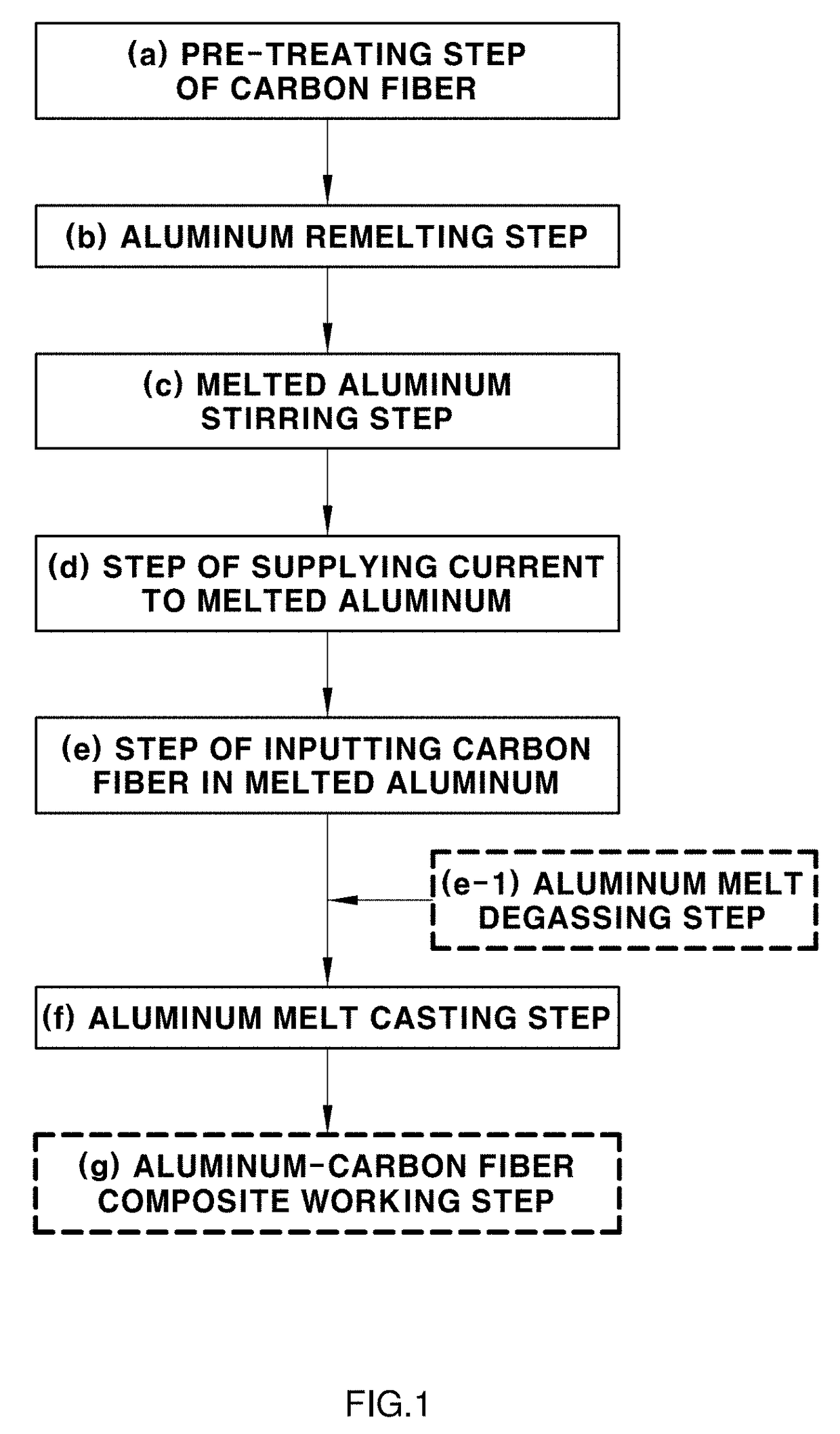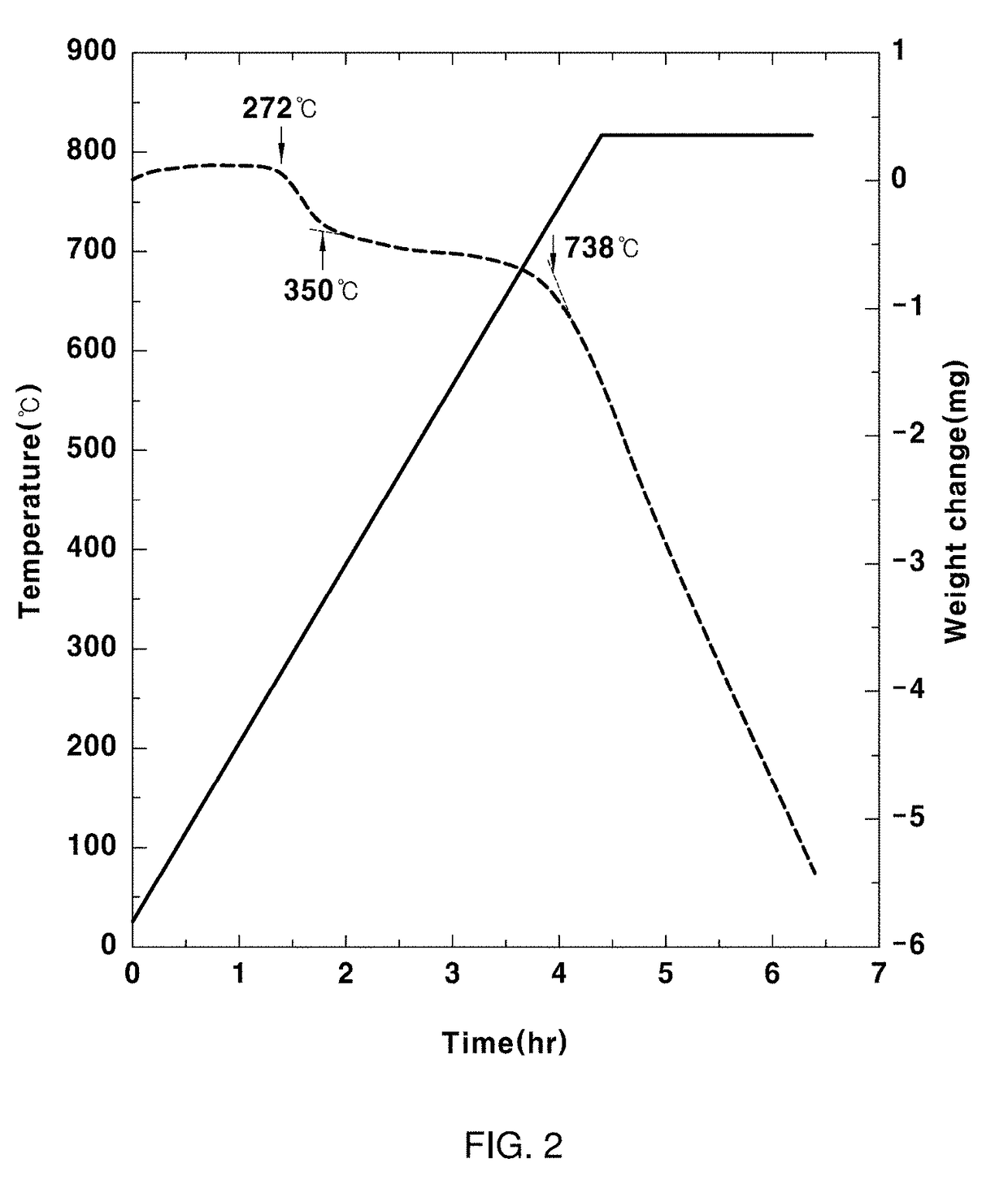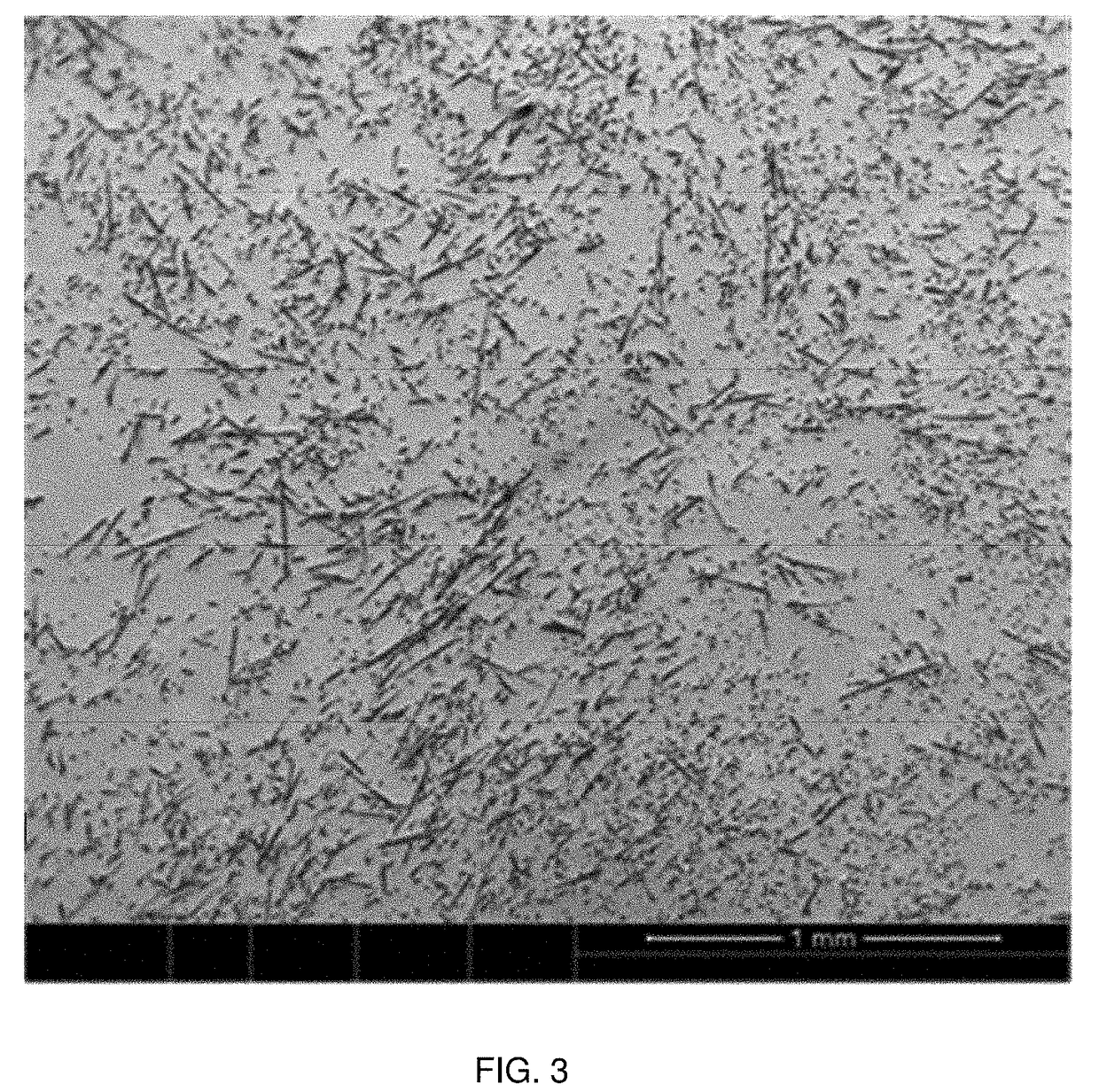Methods for manufacturing carbon fiber reinforced aluminum composites using stir casting process
a technology of carbon fiber reinforced aluminum and stir casting, which is applied in the direction of fibre chemical features, fibre treatment, textiles and papermaking, etc., can solve the problems of high manufacturing cost, large density difference between aluminum and carbon fiber, and difficult mass production, so as to achieve low processing cost, increase the utilization range of aluminum-carbon fiber composites, and improve the effect of automation
- Summary
- Abstract
- Description
- Claims
- Application Information
AI Technical Summary
Benefits of technology
Problems solved by technology
Method used
Image
Examples
example 1
ring Aluminum-5 wt % Carbon Fiber Composite in Vacuum Atmosphere
[0122]A graphite crucible and a reinforcing agent supply device were fixed to an Inconel 601 chamber manufactured to maintain the vacuum atmosphere. Pure aluminum (99.99%) of 4.75 kg was charged into the graphite crucible, vacuum-exhausted up to 5×10−3 torr by using the rotary vacuum pump and thereafter, high-purity argon (99.9999%) is supplied at a flow speed of 2 L / min to remove the oxygen which exists in the chamber and the reinforcing agent supply device. The vacuum exhaustion process was performed three times or more.
[0123]The aluminum was melted by heating the aluminum up to 720° C. by using the electric resistance furnace while supplying argon gas to the chamber and the reinforcing agent supply device at the flow speed of 2 L / min. When the temperature of the aluminum melt was stabilized, a graphite impeller and a graphite electrode were charged into the melt. The melt was stirred so that the vortex is formed on t...
example 2
ring Aluminum-5 wt % Carbon Fiber Composite in Atmosphere
[0132]The graphite crucible and the reinforcing agent supply device were fixed to a 310 stainless chamber. Pure aluminum (99.99%) of 4.75 kg was charged into the graphite crucible and heated up to 720° C. in the atmosphere by using the electric resistance furnace to melt the aluminum. When the temperature of the melt was stabilized, the graphite impeller and the graphite electrode were charged into the melt and the melt was stirred so that the vortex is formed on the surface of the melt by using the electric motor.
[0133]When the vortex is formed on the surface of the melt, the carbon fiber of 250 g was directly input around the vortex in the same method as Example 1.
[0134]When inputting the carbon fiber into the aluminum melt was completed, the current supply was interrupted. In addition, the argon was degassed for 30 minutes while supplying the argon into the melt at a flow rate of 3 L / min through the center of an impeller ro...
example 3
Aluminum-Carbon Fiber Composite
[0136]The graphite crucible was fixed to the 310 stainless chamber and the aluminum-5 wt % carbon fiber composite of 5 kg, which is manufactured in Example 1, was charged into the crucible. The composite was melted by heating the composite up to 720° C. in the atmosphere by using the electric resistance furnace and maintained for 5 hours. The composite was remelted under a condition in which the current is not supplied during the remelting process. The remelted composite was tapped to the iron mold preheated at 200° C. and solidified at the room temperature to manufacture the ‘aluminum-5 wt % carbon fiber composite’.
[0137]The remelted composite melt was maintained for 5 hours under the condition in which the current is not supplied, but the carbon fiber did not float onto the surface of the melt. Further, as a result of observing the casting structure of the aluminum-5 wt % carbon fiber composite which is remelted and manufactured, by using the scannin...
PUM
| Property | Measurement | Unit |
|---|---|---|
| temperature | aaaaa | aaaaa |
| temperature | aaaaa | aaaaa |
| length | aaaaa | aaaaa |
Abstract
Description
Claims
Application Information
 Login to View More
Login to View More - R&D
- Intellectual Property
- Life Sciences
- Materials
- Tech Scout
- Unparalleled Data Quality
- Higher Quality Content
- 60% Fewer Hallucinations
Browse by: Latest US Patents, China's latest patents, Technical Efficacy Thesaurus, Application Domain, Technology Topic, Popular Technical Reports.
© 2025 PatSnap. All rights reserved.Legal|Privacy policy|Modern Slavery Act Transparency Statement|Sitemap|About US| Contact US: help@patsnap.com



